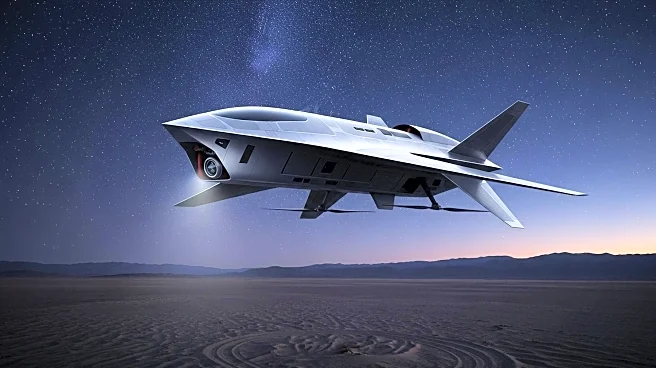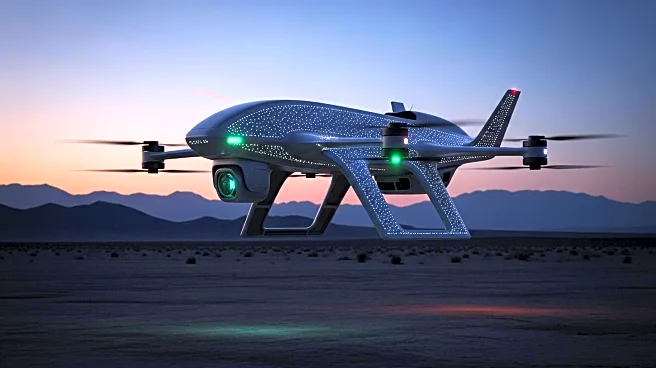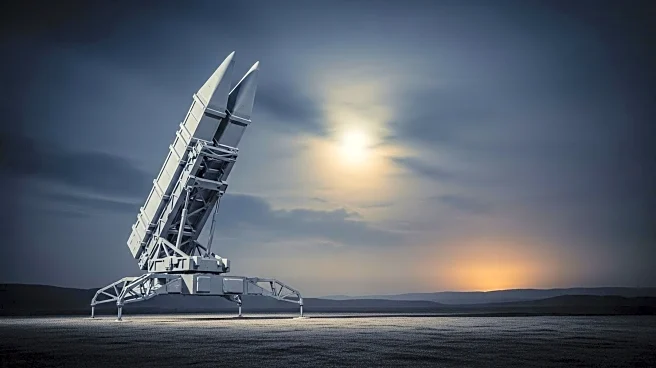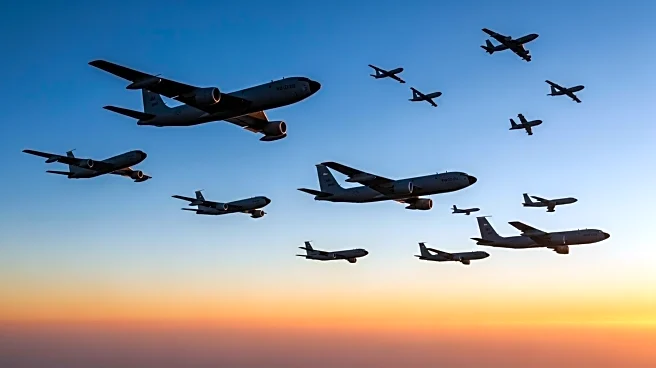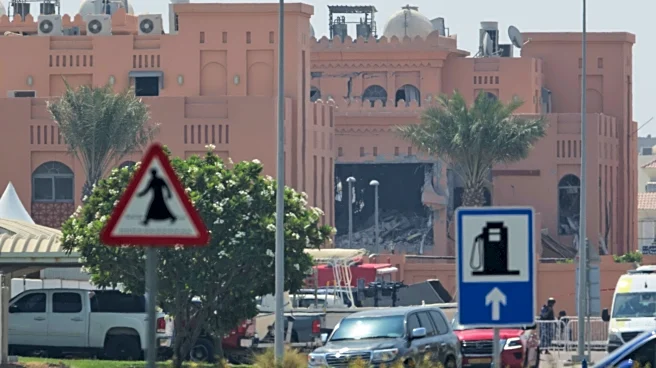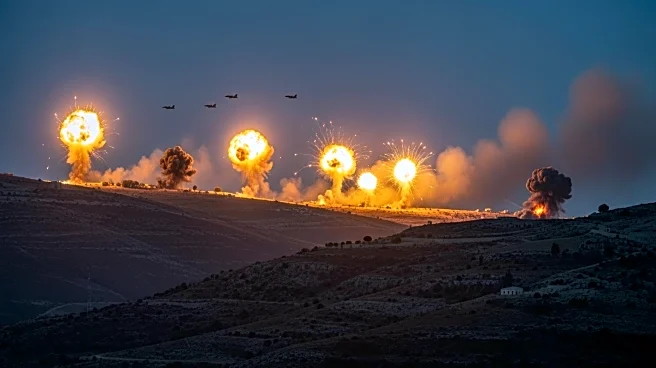What's Happening?
Iran has developed a fleet of stealth drones based on a captured American RQ-170 Sentinel drone. The incident occurred on December 4, 2011, when the drone veered off course during a test mission over Afghanistan and landed in Iran. The Iranian Revolutionary Guard reportedly jammed the drone's communications and spoofed its GPS signals, allowing them to reverse-engineer the technology. The resulting Shahed-171 Simorgh drone is a near-perfect replica of the Sentinel, equipped for long-range reconnaissance. Iran has since expanded its drone arsenal, creating variants for surveillance, attack, and suicide missions. These drones are now in the hands of Iran's proxy forces across the region, posing a strategic challenge to Israel and other nations.
Why It's Important?
The development of Iran's stealth drone fleet represents a significant shift in regional military capabilities. These drones enhance Iran's reconnaissance and attack capabilities, potentially altering the balance of power in the Middle East. The drones' ability to launch from pickup trucks and land on paved roads increases their operational flexibility. Their presence complicates air defense strategies for countries like Israel, which must now contend with advanced stealth technology. Additionally, Iran's ability to reverse-engineer and produce such drones could lead to increased military exports, affecting global arms markets and regional security dynamics.
What's Next?
Iran's stealth drones remain largely unused in direct conflict, possibly preserving their strategic advantage for future engagements. The drones could be deployed in larger numbers if regional tensions escalate, challenging existing air defense systems. Iran may also continue marketing these drones internationally, potentially expanding its influence and military partnerships. Countries in the region may need to enhance their defense capabilities to counter the threat posed by these advanced drones.
Beyond the Headlines
The ethical implications of reverse-engineering military technology raise concerns about intellectual property and international security norms. Iran's actions could prompt discussions on the legality and morality of using captured technology for military advancements. The situation also highlights the ongoing technological arms race in the Middle East, with countries investing heavily in advanced military capabilities.

